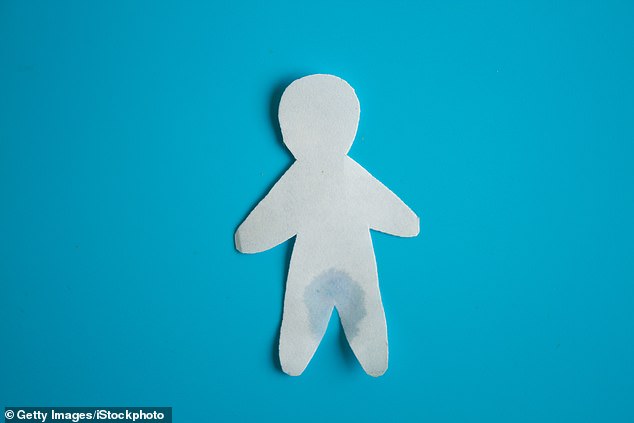A high-tech chair that exercises the pelvic muscles could eliminate urinary incontinence in men.
A magnetic coil hidden in the chair seat generates a high-intensity magnetic field when activated. As the magnetic energy waves pass through the pelvic region, they trigger thousands of tiny contractions in the muscles that control the bladder, tightening them and reducing the risk of urine leakage.
The research found that men with severe incontinence who sat in the chair for six 30-minute sessions had less leakage, used fewer bladder control pads and woke up less frequently during the night to urinate.
Approximately one in ten people suffer from urinary incontinence. Women are the most affected, often due to the pressure that pregnancy and childbirth can put on the pelvic floor.
But up to 30 percent of men over 60 also have it, often due to an enlarged prostate (the walnut-shaped gland that surrounds the urethra, the tube that carries urine out of the body).
Approximately one in ten people suffer from urinary incontinence. Women are the most affected, but up to 30 percent of men aged 60 or older also suffer from it, often due to an enlarged prostate.
The prostate grows naturally as part of aging, putting pressure on the urethra and causing leakage or, in some cases, urinary retention (when a man has difficulty emptying his bladder properly).
Another common cause is prostate cancer surgery, where the entire gland is removed – this can also cause damage to the nerves and muscles around the bladder.
The procedure, called radical prostatectomy, is carried out on more than 4,000 men a year in the UK. An estimated 65 per cent experience symptoms of urinary incontinence up to five years after surgery.
Current treatments range from pelvic floor muscle strengthening exercises to medications that relax the muscles of the bladder neck, making it easier to empty.
Now researchers at John Muir Hospital in California, where the high-tech chair is being tested, believe it could be a more convenient, drug-free alternative.
They recruited ten men who had undergone radical prostatectomy and who suffered from severe urinary incontinence. Each sat in the chair for six half-hour sessions over a three-week period.
Once turned on using a portable remote control, the magnetic field it generates stimulates electrical activity in the pelvic floor muscles, activating the nerves that control muscle contractions.
The theory is that, similar to pelvic floor exercises, contractions increase muscle density, making them stronger and better able to control urine flow.
Previous research has shown that the same technique has some beneficial effects in incontinent women.
The results of the latest study, published in the Journal of Medical and Surgical Urology, showed that men had a 30 percent reduction in incontinence symptoms.
The use of incontinence pads was reduced by 40 percent (two of the volunteers were able to stop using them altogether), while the number of times sleep was interrupted by the need to urinate was halved.
Commenting on the research, Professor Raj Persad, consultant urologist at Bristol Urology, said: ‘This technology is fascinating and represents an ingenious way of activating and strengthening these muscles.
It could become a mainstay of therapy if larger trials prove effective.
A newly developed drug that acts on the muscles of the urethra (the tube that carries urine out of the body) may provide relief from incontinence. A study from Japan’s Nihon University showed that the drug, code-named TAS-303, cut incontinence episodes in half, the Journal of Urology reported. It works by strengthening the muscles of the urethra.


